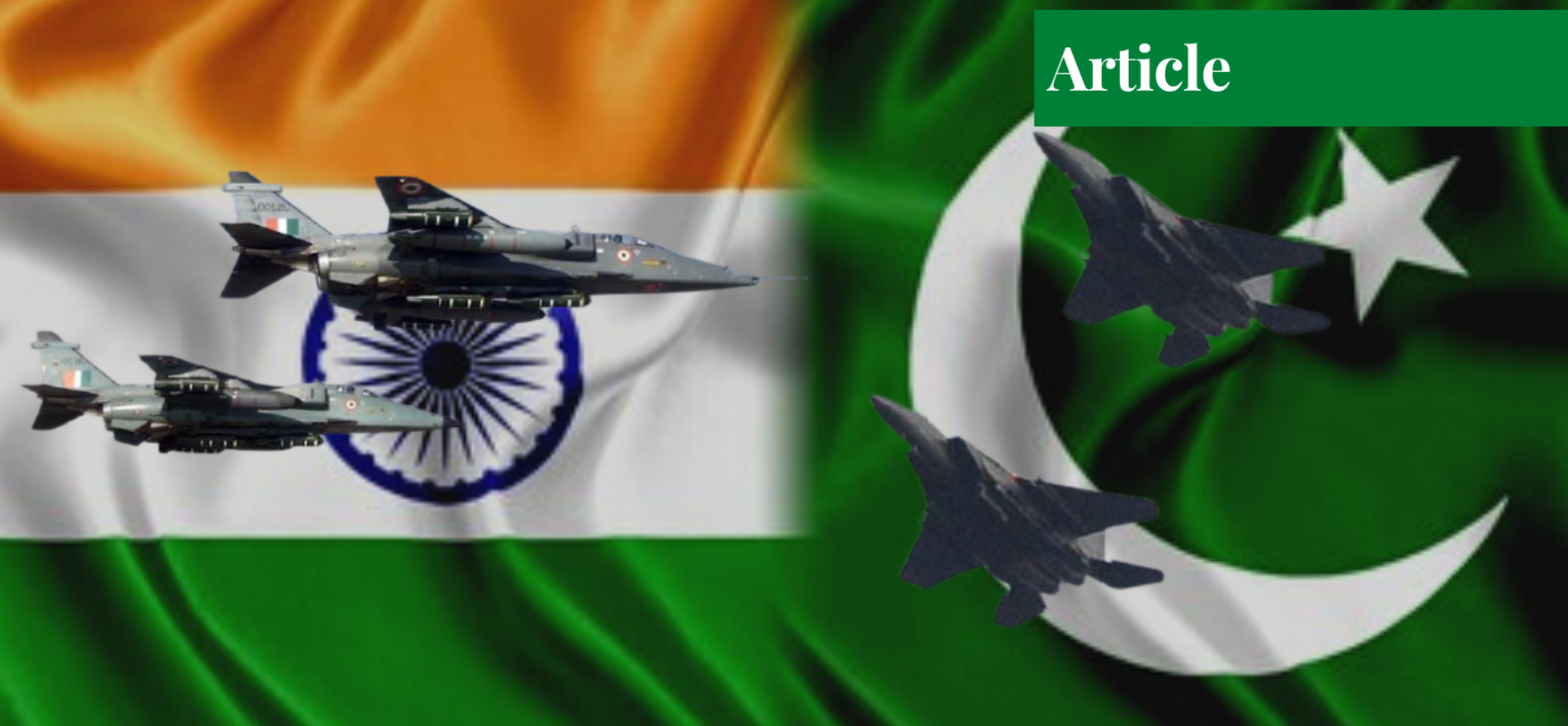Mr Hamza Sharif graduated with a degree in Mechanical Engineering from HITEC University. His areas of interest are geopolitics, current affairs, and history.
Introduction
In order to protect the geopolitical and sovereign interests of a country from being played by any other external power, it is the duty of the foreign ministry to manufacture potent foreign policies. Furthermore, it is the duty of the military to encounter any physical threats. In the case of Pakistan Air Force vs Indian Air Force, these threats manifest from the presence or the possibility of acquiring 5th generation technology.
The world is headed towards a far more modern spectrum of battles known as 5th generation or hybrid-warfare. Survival is only possible if you keep up with the technology the world, and especially your enemies, attains. The two military big boys in South Asia are Pakistan and India; it is very clear to us that both of them are the reason for each other’s advancement and need for military technology. Both act as catalysts for each other’s problems but also as the motivation to do better.
Importance of Stealth Technology for Pakistan
Pakistan must start its efforts in attaining stealth technology, especially a stealth fighter aircraft. This will not only help it to gain an edge on the battlefield but also may serve as a way forward from its dilapidated Dassault Mirage 5s and the mighty F-16s.
Procuring stealth technology could serve as a game-changer in aerial superiority in the subcontinent. Apart from a stealth plane, other aerial machinery is also important such as UAVs and BVR (Beyond Visual Range) air-to-air missiles.
Talking about the economics of stealth technology, and taking the SU-57 stealth aircraft as an example, Russia spent about 8 to 10 billion dollars on its development program, according to a 2009 estimate. However, Pakistan and Russia have very different circumstances. The question is, “does Pakistan have spare cash to actually venture onto such a long-term funds-consuming project of developing its very own indigenous stealth aircraft?”
Such development projects take years and decades to actually sprout out a 5th Generation aircraft. Russia itself had to enroll India into the project as well, but India extruded itself from the project in 2018 claiming that it had no confidence that the plane would actually deliver what the Russians claimed.
However, this mainly represented the American opinion on why India left the project. The Indian opinion is a different story. India claims that Russia was not offering them transfer of technology and neither could India further afford the project.
History has proven to us the importance of aerial superiority time and again. For instance, the Arab-Israel 6-day war in 1967 showed us how a small country was able to turn the tide on its neighboring countries by carrying out counter-flight operations—the Sinai airstrikes. The assault destroyed airstrips of the Egyptian air force and completely handicapped Egypt. On the second day of the war, the Israeli Air Force was easily targeting the ground forces of Egypt, Jordan, Iraq, and Syria.
Our own heroics in the 1965 war have proven to us the indispensability of aerial superiority. In the war against terrorism, the homemade JF-17s of the Pakistan Air Force have drastically helped secure major victories.
Though it is an axiom that it is not the gun that assures victory rather it is the man behind the gun, but to make things comfortable and gets more out of the skilled man. The possession of advanced machinery demoralizes the enemy whereas, it motivates and gives the upper edge to the ones who have it.
In the sub-continent not only do nuclear weapons account for the balance of power but so do other military technologies. Hence, the production or procurement of a 5th generation aircraft and other aerial combat machinery has become really important.
Such ventures raise many eyebrows, and once the equipment and especially the 5th generation stealth aircraft are in Pakistan’s hands, South Asia may feel a shift in military power. Having stealth technology will greatly tilt the air superiority scale towards Pakistan. Pakistan will no longer be just a competitor in the “Pakistan Air Force vs Indian Air Force” rivalry but rather the state with the most authority, the winner. This in turn will catalyze the defense ministries in India to gain aerial stealth technology either by procuring it or developing it by themselves.
India’s Tilt Towards Modern Military Technology
Though let’s not forget that India has yet to develop an aircraft that is well matched to the JF-17 Thunder. The HAL Tejas was not a big success. Firstly, because it was a delayed project, and secondly, the Indian Air Force has opted to go for non-indigenously prepared warfare machinery like the Rafaels, which proved the lack of confidence India has in its own product. On the other hand, we can see Pakistan gearing up to enroll Block – 3 of JF-17 Thunder into its fleet.
China’s airforce displayed a commanding threat to the US in the recent clash in the South China Sea; the Chinese were able to deter the US breach into Chinese claimed areas. This shows that the Chinese technology and skill of warcraft had gained a superior edge over the American arsenal. With the passage of time, it seems that the Chinese superiority in the region will reign.
India’s defense ministry, after the rise in tension with China, approved the procurement of missile systems, Russian fighter jets, and also other military hardware. The package as a whole was worth more than 5 billion US dollars. This shows that India is in a state of panic but also in a state to prepare itself to avoid any further military humiliation.
Apart from Russia, India is also heavily being armed by the French. In recent times, things, such as the procurement of the American F-15EX by India, have also flickered. but their possibility will only be proven with time. For now, it is clear that India is extravagantly spending money on military hardware which seems to be very perilous. This development has succeeded in setting-off an even greater arms race in the region.
Keeping this procurement of military hardware by India in mind, and knowing that India is taking all these extortionate steps to prove its dominance over Pakistan and China in the region, it honestly bewilders the mind when Pakistan military’s spending is looked into as if it is totally exorbitant. Whereas, India’s defense budget is also ten times that of Pakistan’s.
Conclusion
In light of India receiving its first few Rafaels, the Pakistan Air Force must have no doubt about all the possible alternatives to defend Pakistani airspace. Procuring stealth technology is not an easy game, and neither is developing one; it requires research, prototyping, development, testing, and then finally mass production which all costs billions of dollars.
You have to take into account the avionics and design them for extreme maneuverability. Its weapons system needs to be advanced for precise targeting and also quick to respond to tackle enemy threats. The engines need to be highly efficient not only in supplying the thrust but also economically.
The F-16 costs around eight thousand dollars to operate per hour, a new sophisticated airplane would definitely cost a lot more. So the future trend dictates having cutting-edge technology but at a reasonable price tag. The recent positive developments in the relationship between Pakistan and Russia could prove beneficial in terms of military trade or collaborations. Moreover, in this never-ending race of the Pakistan Air Force vs Indian Air Force, staying in the competition could depend on Pakistan’s close collaboration with China on a long-term basis.
If you want to submit your articles and/or research papers, please check the Submissions page.
The views and opinions expressed in this article/paper are the author’s own and do not necessarily reflect the editorial position of Paradigm Shift.


















